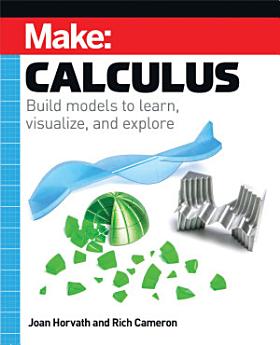Make: Calculus
About this ebook
Make:Calculus imagines how Newton might have used 3D printed models, construction toys, programming, craft materials, and an Arduino or two to teach calculus concepts in an intuitive way. The book uses as little reliance on algebra as possible while still retaining enough to allow comparison with a traditional curriculum.
This book is not a traditional Calculus I textbook. Rather, it will take the reader on a tour of key concepts in calculus that lend themselves to hands-on projects. This book also defines terms and common symbols for them so that self-learners can learn more on their own.
About the author
Joan Horvath is an MIT alumna, a recovering rocket scientist, and educator. She is a cofounder of Nonscriptum LLC.
Rich Cameron is an open-source 3D printer hacker who designed the RepRapWallace and Bukito printers. He is a cofounder of Nonscriptum LLC.






